Ana Hernando Moreno conceives an award-winning accessible playground for children with disabilities
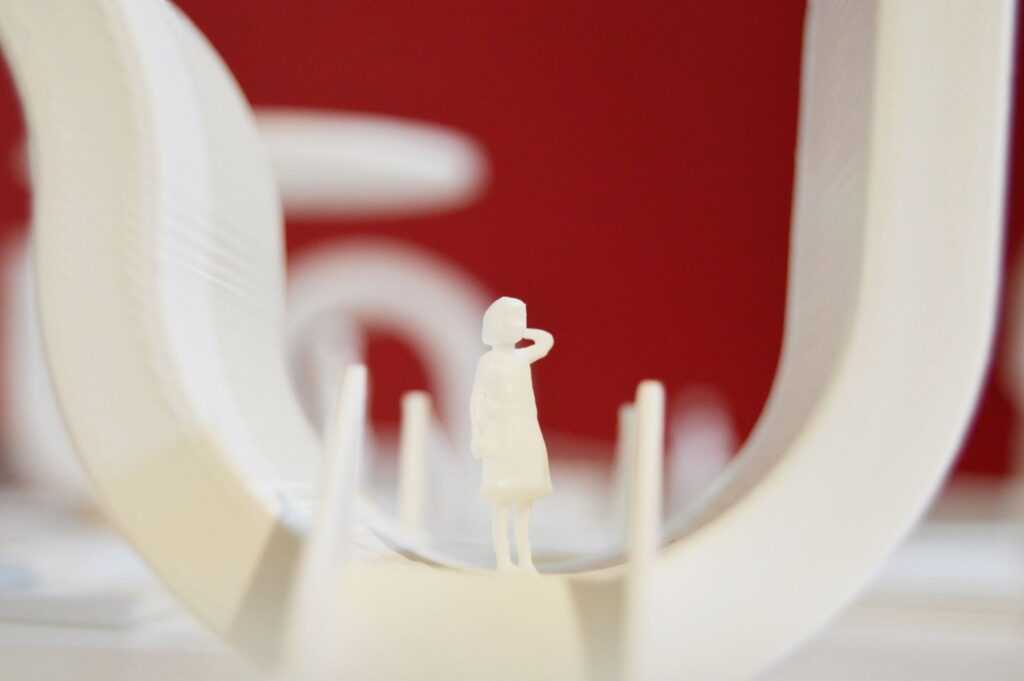
The winners of the MINI Design Awards were announced during the fifth edition of the annual Madrid Design Festival which took place at venues across Madrid in February and March 2022. The awards recognize innovative initiatives that generate changes to the urban environment, actions to improve the quality of life and the efficiency of cities, or projects that speak to new possibilities and challenges to achieve intelligent, inclusive, and sustainable cities in the 21st century.
Ana Hernando Moreno’s “Parque Constanz” won in the new talent category. Parque Constanz is a playground concept that allows full accessibility for families and children with disabilities. There are over 25,000 children with disabilities in Madrid. Recognizing that existing legislation neither addresses their real-life needs nor can it guarantee that they will not face barriers to accessing playground structures, she conceived a playground structure with distinct geometric forms and bright colors. It allows blind children to relate form to colour. Her goal is to normalize disability needs by having children between the ages of three and twelve come together, interact and learn to live with one another, regardless of capacity.
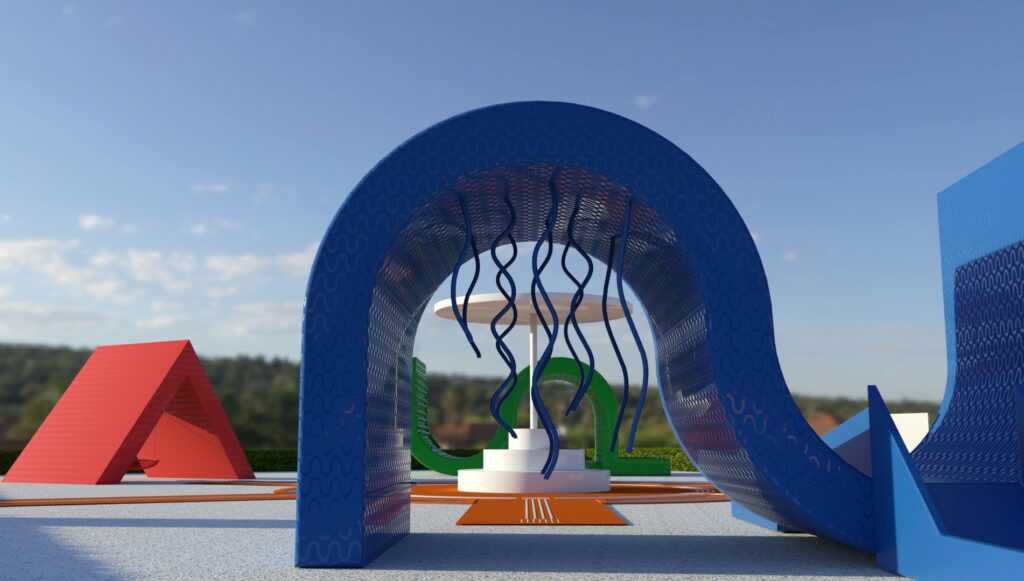
From Cadiz, Ana Hernando Moreno is a student in design and advertising at Francisco de Vitoria University. Spain for Design caught up with her.
What was the genesis of your project?
In Spain, there are more than 168, 000 children with disabilities. Like all children, they seek to find their place in the world, have fun and grow up with joy. Yet, they experience discrimination, face barriers, and non-inclusion due to the lack of normalization of diversity and a lack of acceptance of children with special needs. Architectural structures are not designed for everyone, making socialization even more difficult. An example of this is playgrounds.
Children’s playgrounds should be accessible recreational areas that adapt to those with all disabilities and improve their lives. However, as we all know, this is not the reality. Many children and families cannot enjoy playgrounds. I thus decided to design an innovative, sustainable and accessible playground space for children between three and twelve years of age where they could play without discrimination.
The playground offers a solution adapted to the needs of people and has an informative and educational purpose. I based it on the Constanz System, a language that relates colors to geometric shapes that allow blind children to feel colors. Parque Constanz is a play model adapted to different intensities and needs through structures whose elevations correspond to the forms of this system. I seek to promote awareness, the interaction between children with and without disabilities, and aesthetics. I want to contribute to the development of urban spaces that are sustainable and improve the lives of children with disabilities and their families. In short, advocate for a more inclusive world and society.
What were the steps in the development of your concept for Parque Constanz?
I started with Bruno Munari’s book Da cosa nasce cosa, which helped me establish a methodology easy to extrapolate to different projects and find solutions to problems based on people’s needs. It has four phases:
Challenge: After social listening about the barriers and problems users face, I conceived the challenge: design an innovative, sustainable, and accessible playground that allows children between the ages of three and twelve to enjoy without prejudice or discrimination.
Observation: The second phase involved research. I undertook a literature review focusing on three pillars: disability, playgrounds, and sustainability. I then carried out field research on the current situation to understand the barriers people face. I conducted six interviews and fifty-three surveys to understand their reality from three points of view: professionals, people with disabilities, and family members of people with disabilities.
Creation: For this phase, I conceived the design based on the findings from the research phase. For inspiration, I designed a catalog of form, materials, aesthetics, and accessibility references to discover the latest innovations in these sectors, including lighting systems, materials elements, and the Constanz System, the basis for the project. I used this system to design the structures and shape an accessible, sustainable, and innovative playground. I created haptic plans for access to the playground. I selected four materials with minimum environmental impact and optimal durability: high-density bio polyethylene, recycled rubber, resin, and laurel-cherry hedge. I made a lighting plan focused on kinetic energy and bioluminescence, all motivated by the search for sustainability beyond accessibility. To facilitate an understanding of Parque Constanz, I developed the plan and structures, a 1:50 scale mock-up, and a 3D model carried out through 3Ds Max and Cinema 4D. I wanted to show the design in a visually attractive and truthful way.
Vision: For the vision phase, I analyzed the results and drew conclusions for application to other projects. I want it to be a continuous design.
Please explain how the forms, and colors promote accessibility of the play structures.
Parque Constanz is an open play area that invites children to develop their creativity and independence by interacting with structures in different ways according to their abilities. All are accessible, have ramp access, respond to all measures necessary for wheelchair travel, offer guidance for people with visual disabilities, and adaptations for autistic children. One of the problems highlighted by families during interviews is the absence of inclusive education. It thus had to be didactic, by relating it to the use of the Constanz System. The system aims to transform colors into tangible and concrete elements by building a language that follows its own logic. It allows visually disabled children to feel colors and helps them identify geometric figures.
The elevation of each structure corresponds to the form presented in the Constanz System for each color. The yellow is a horizontal line because the creator of the system, Constanza Bonilla, related this color to a sunray. The red structure is a zigzag, like fire. The blue is a wave of the sea. The green, obtained from the mixture of blue and yellow colors, is a union of both structures’ elevations. Children with visual disabilities can thus feel the colors. Each structure is covered with a 3D pattern that corresponds to its shape and color, so this way, children can “touch” the color.
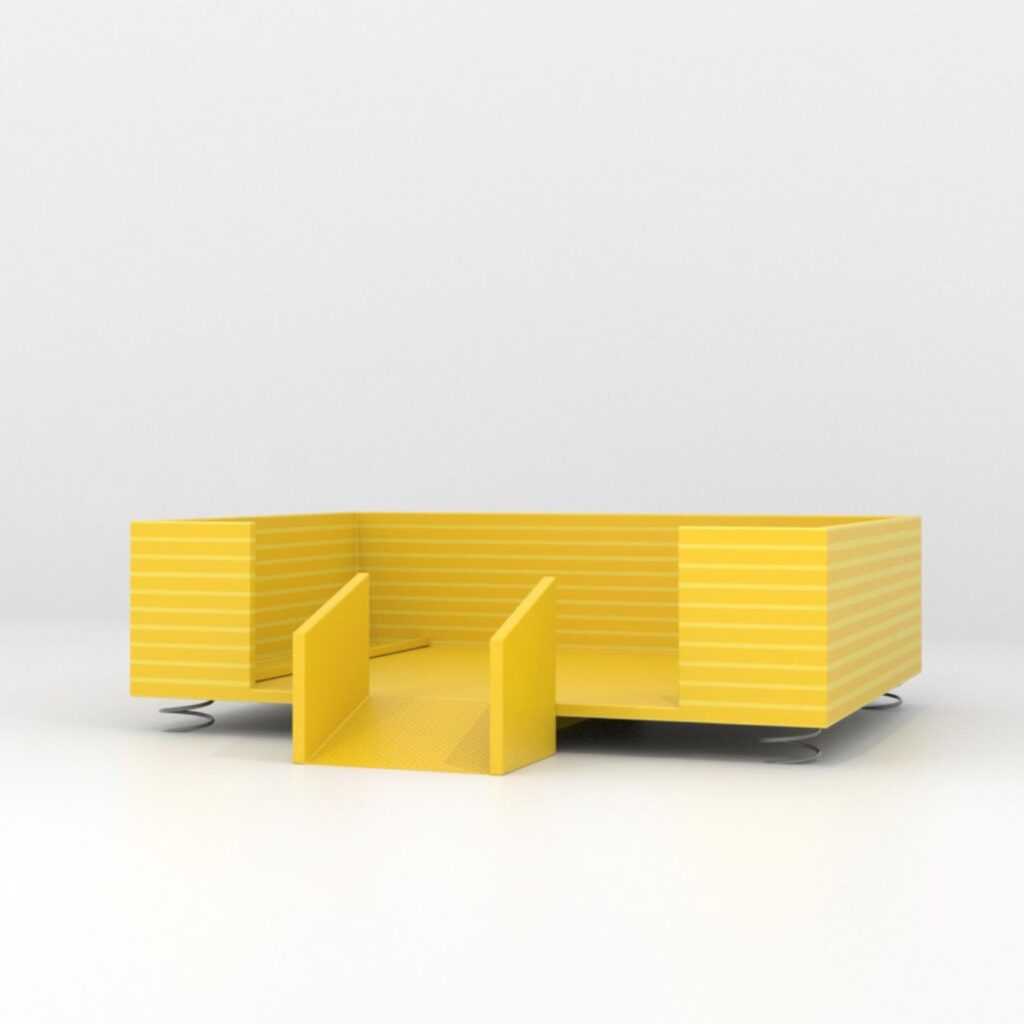
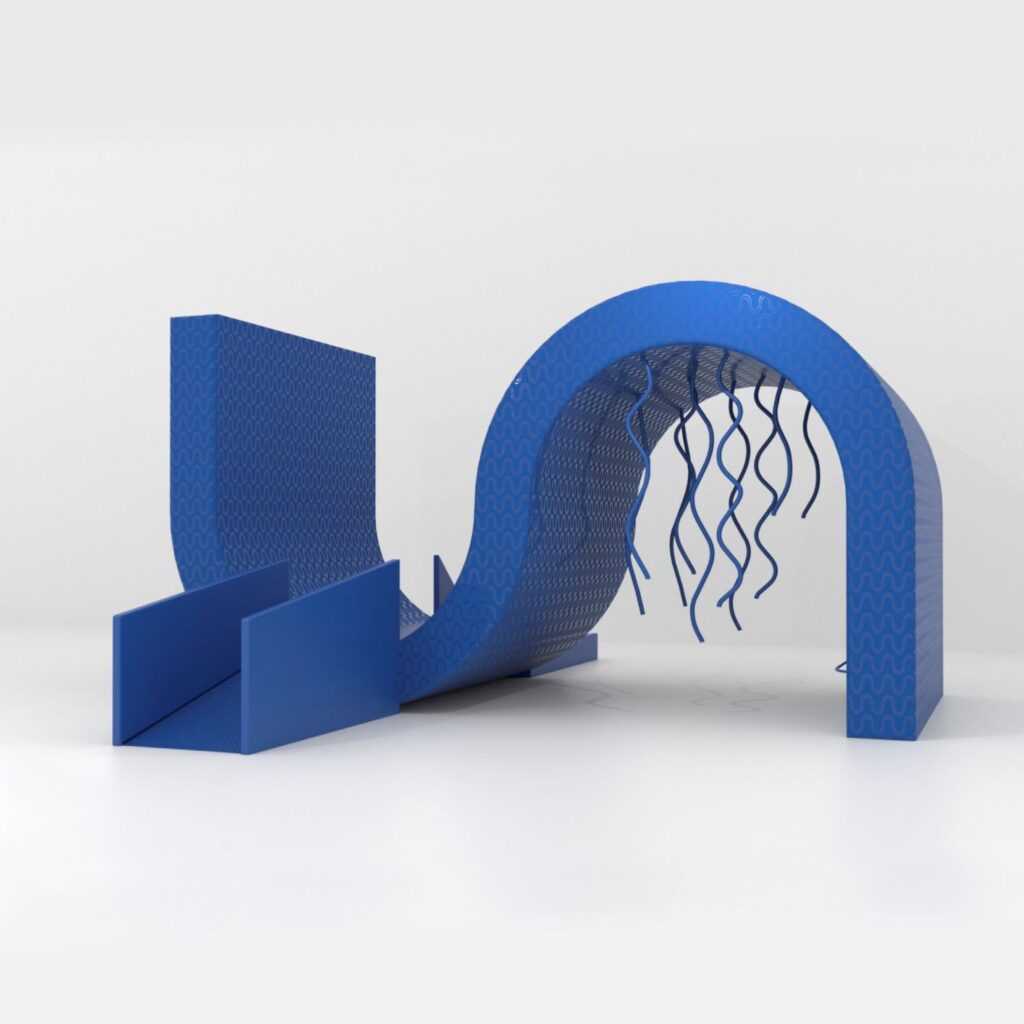
I originally designed Parque Constanz to be in Madrid but adaptable in any other city. It is a play model that I adapted to different intensities and needs. I designed it with a radial layout, constituting a star of six arms surrounded by a rectangular area of hedges based on repeated requests for a playground that prevents children from escaping. Two of the six arms lead to the entrance and exit roads, where there are two signage panels. The other four lead to structures that invite children to play in different ways and at different levels. There is a podotactile path at the center of these roads. It guides children with visual disabilities from one structure to another. A fifth structure serves as a bench for families where these roads converge. Finally, we installed a series of trampolines between these arms to allow play among disabled and non-disabled children, to level their play, thus promoting synergy among all children.
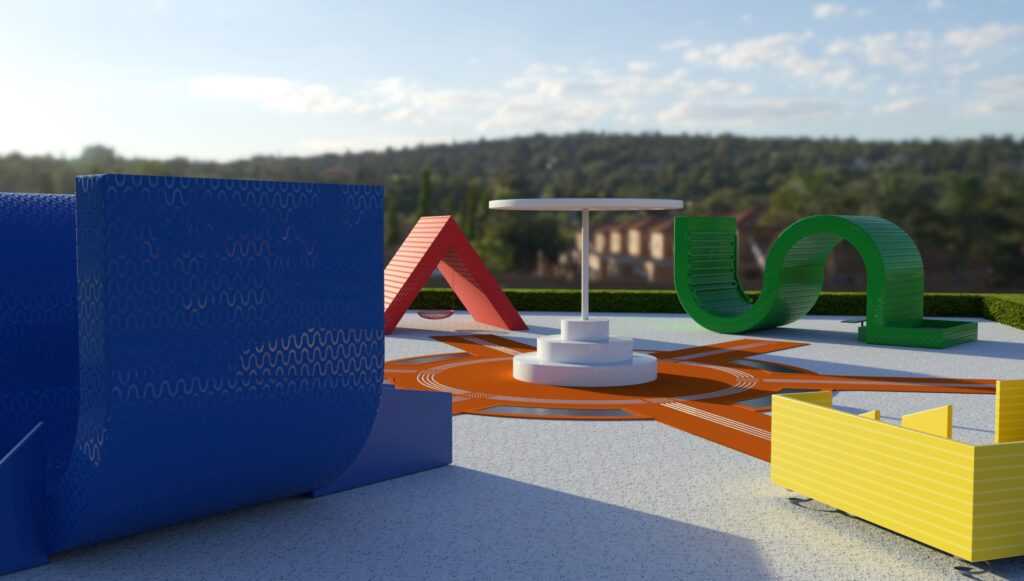
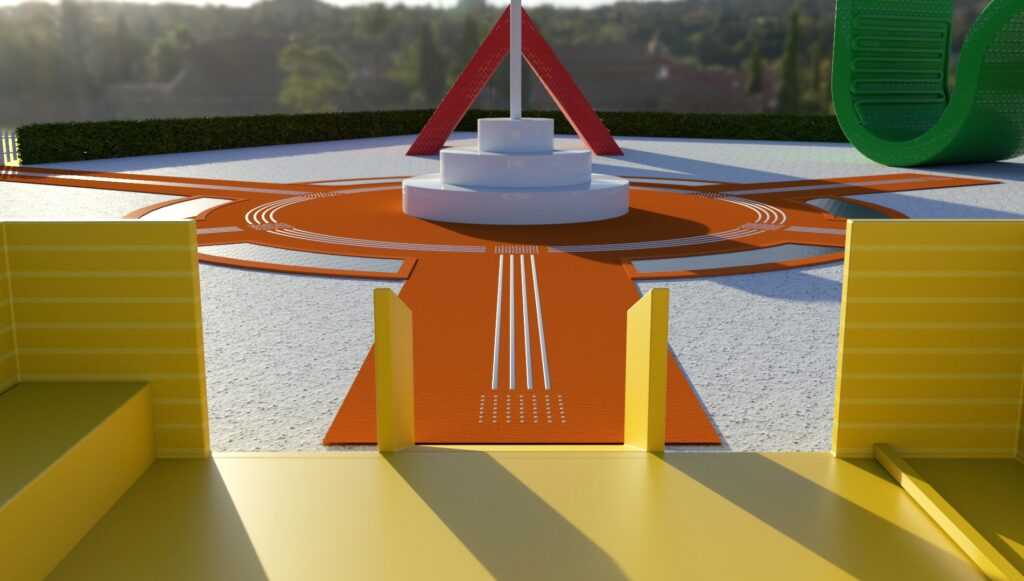
Now that you have incorporated accessible design, do you want to continue this in your future endeavors?
Of course! When I started developing Parque Constanz, the only thing I knew for sure was that it had to be a social design project that would help transform the world and improve the lives of people and the planet. I found that architectural barriers have a critical impact on childhood development. Accessibility and sustainability have always been essential aspects of my projects. After learning about the challenges and needs of people with disabilities, I want to contribute to changing design by making it universal, inclusive, and multidisciplinary.
What has been the public reaction to your award for the project?
The most beautiful part of the award is that it has allowed me to reach more people, give voice to the needs of children, invite people to rethink the built urban environment, and focus on disability. I have participated in interviews, two of them on live radio, been featured in design magazines, and newspapers, and been in touch with professionals from the world of disability who are interested in understanding my project and learning from it.
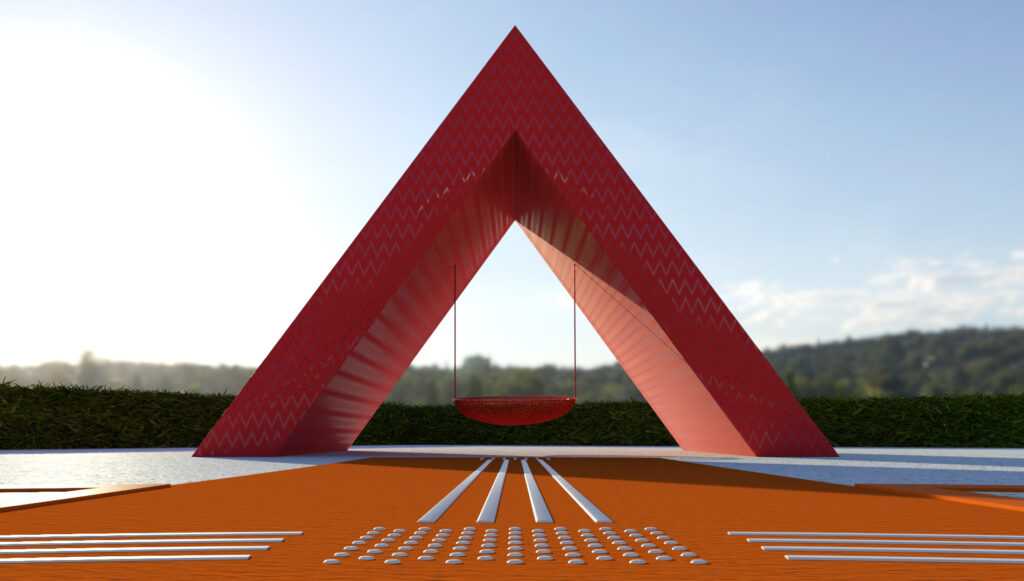
Images courtesy of the Madrid Design Festival and Ana Hernando Moreno.
